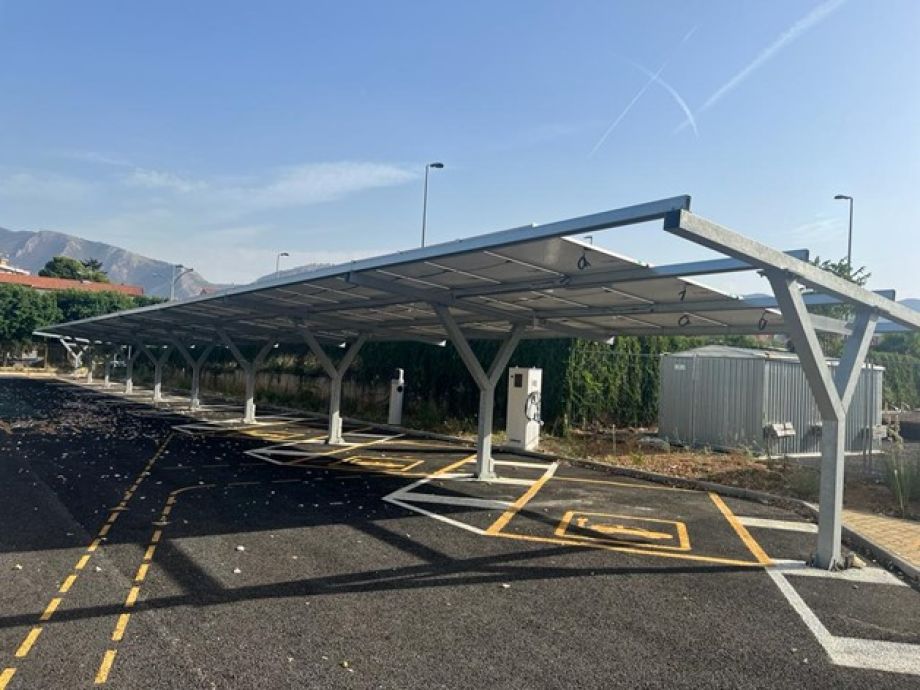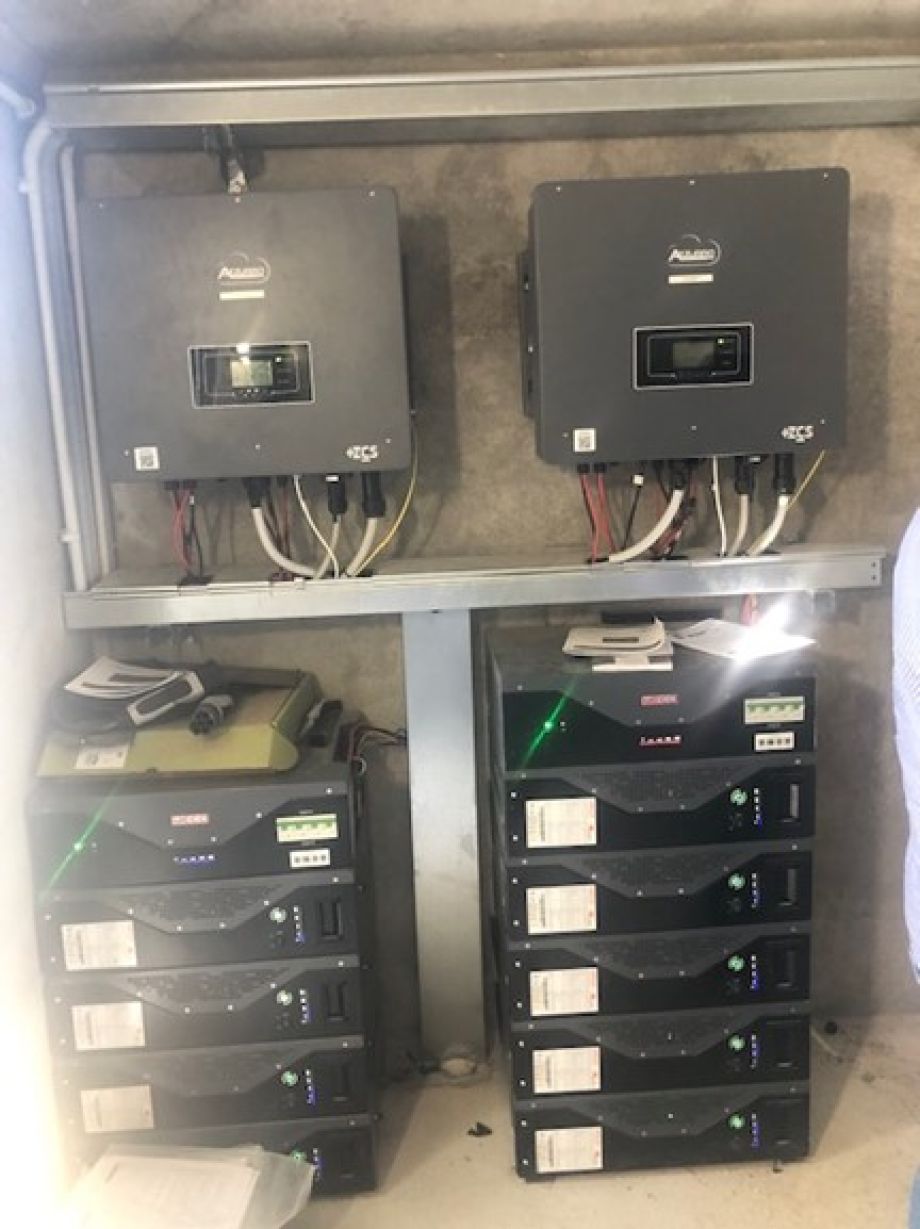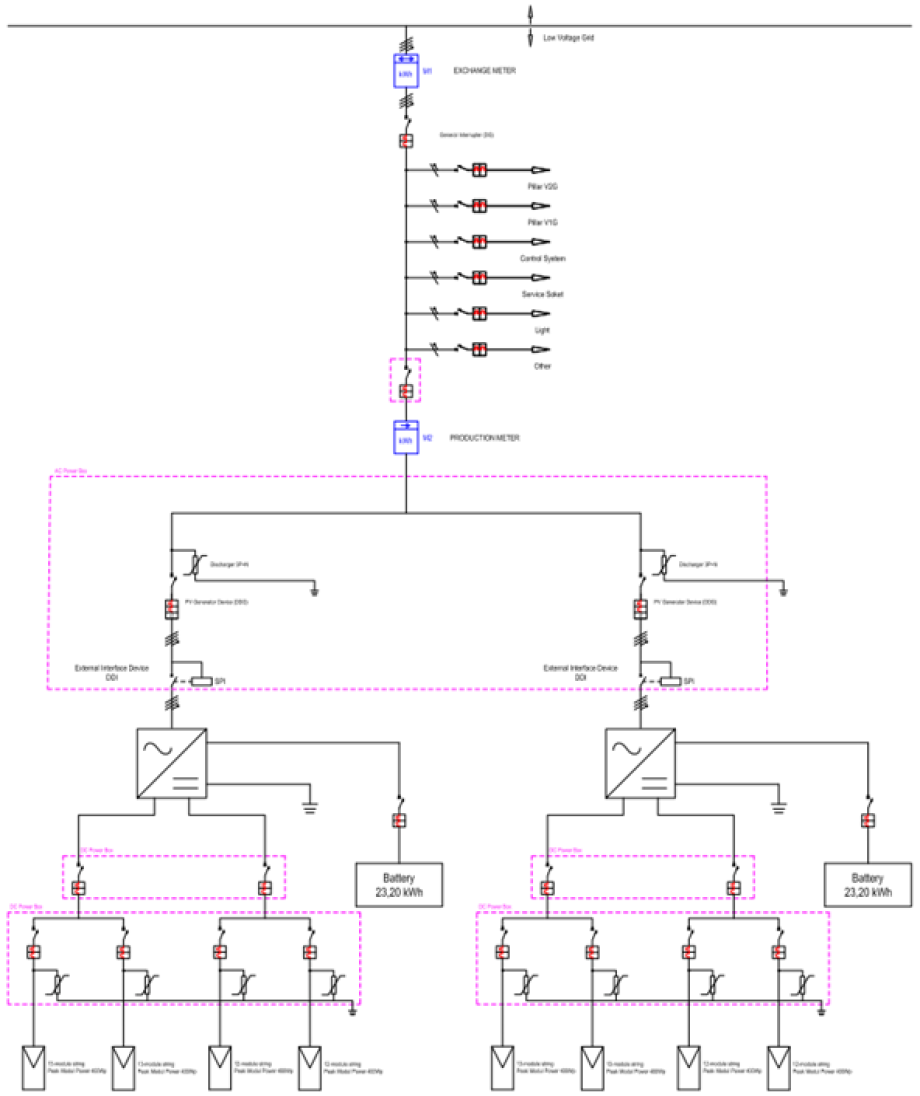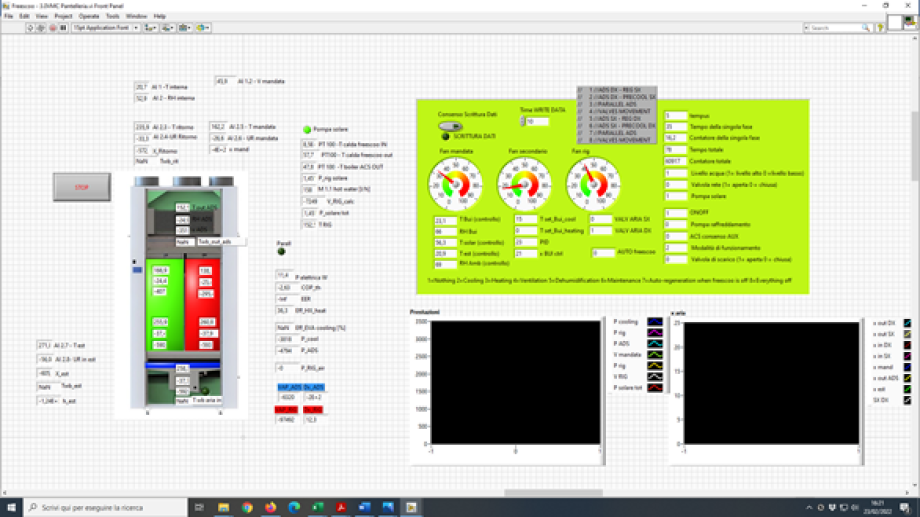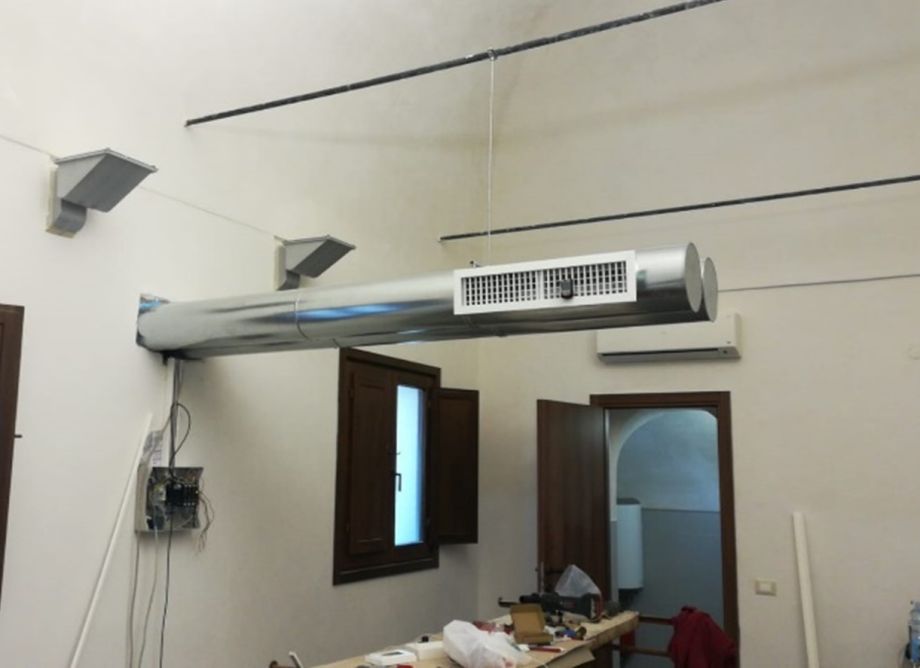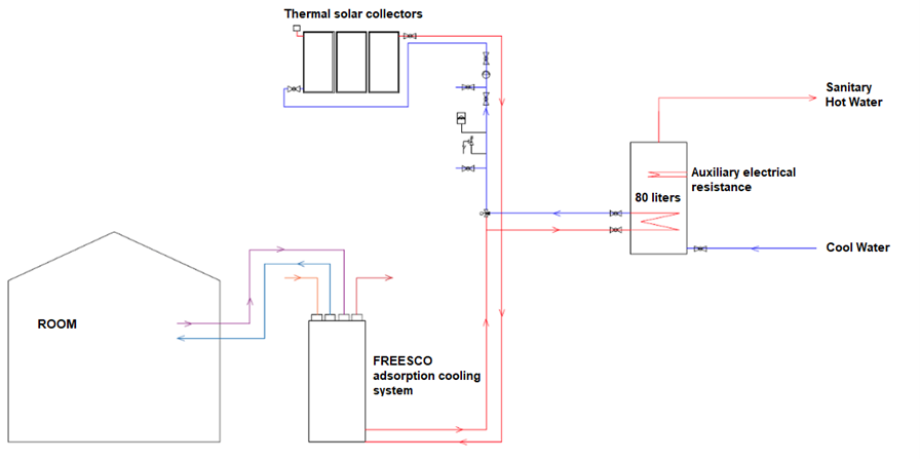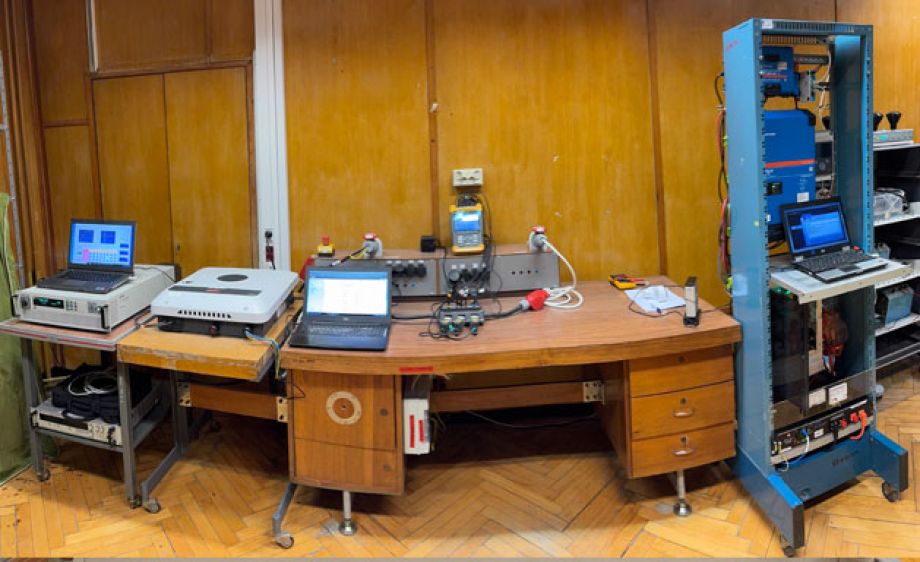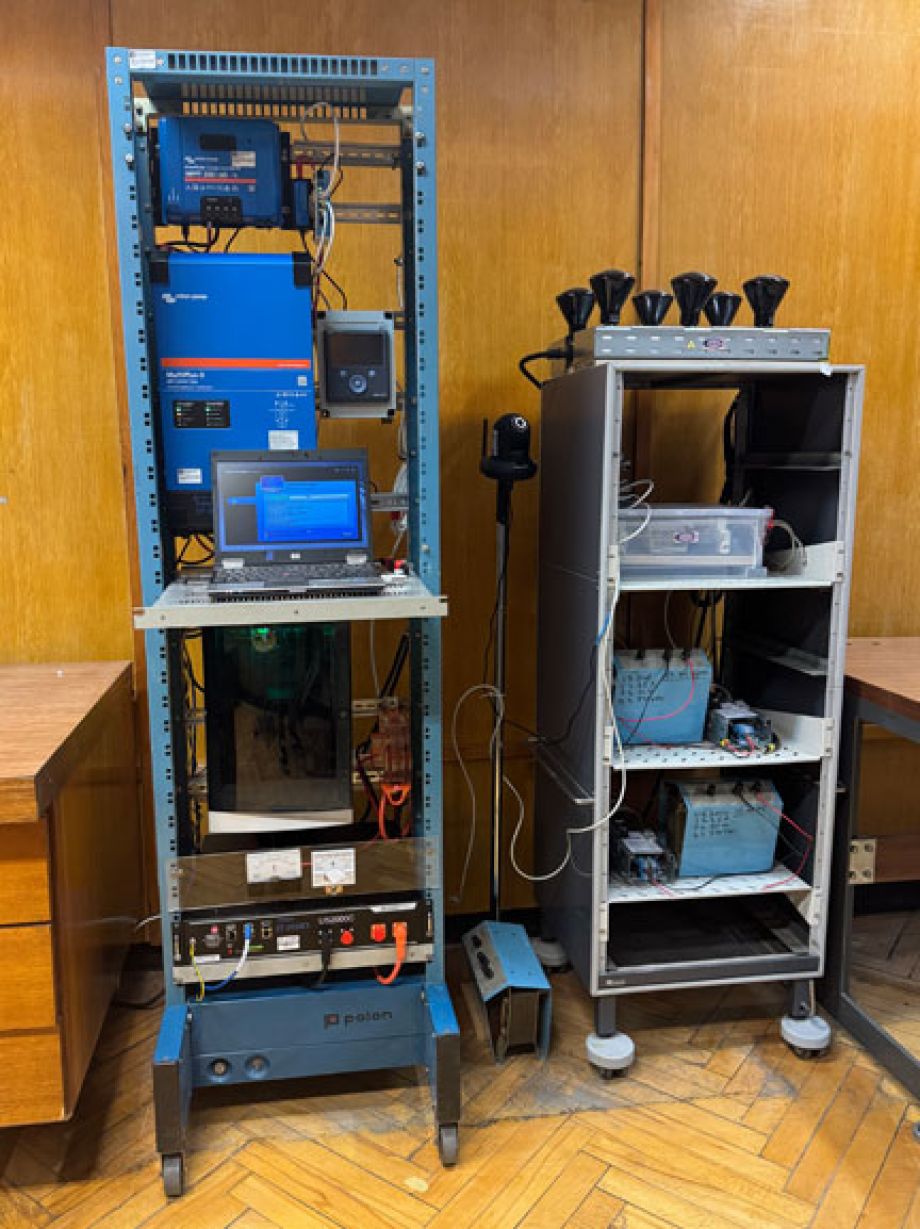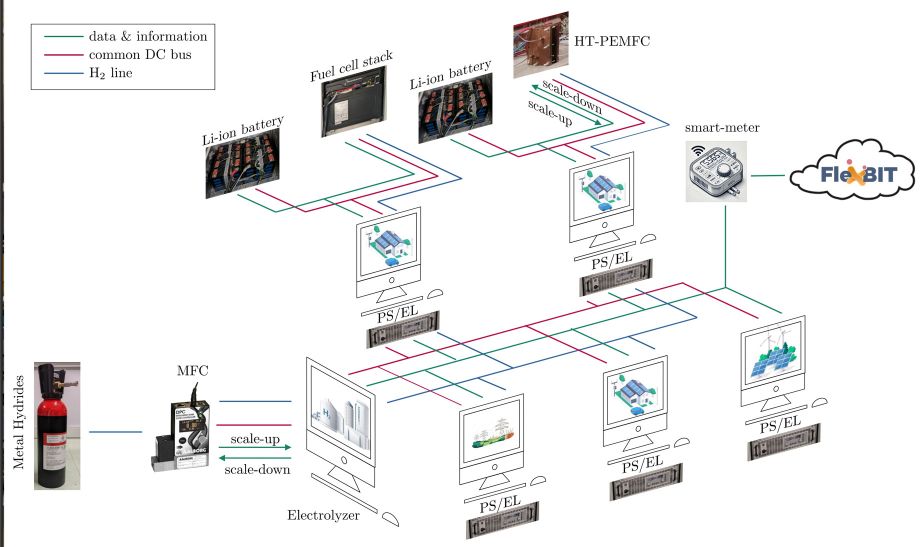
Innovation Pioneers
Demonstrating Innovation Across Europe
showcased through seven demonstrators across Malta, Germany, Poland, and Italy, spanning both lab and real-world environments.
Industrial Energy Community
In Germany, FlexBIT is pioneering the development of an industrial energy community by interconnecting two buildings: Aue Funeral, a tertiary facility, and aRTE Möbel, a furniture manufacturing plant. The goal is to enhance energy efficiency and sustainability through shared renewable energy resources and smart energy management.
To achieve this, we first integrate renewable energy production systems and flexible load-balancing technologies. Both buildings are already equipped with photovoltaic systems and battery storage. Additionally, we enhance energy flexibility by dynamically adjusting cooling chamber temperatures at Aue Funeral and compressor pressure at aRTE Möbel based on real-time renewable energy availability. These elements are managed through an advanced energy management system (EMS).
Second, we implement systems to load balance between these buildings. When one facility reaches peak energy demand, excess energy that would otherwise be fed into the grid can instead be automatically transferred to the other facility—provided there is available capacity in its EMS. This process is enabled by real-time energy data analysis, leveraging cutting-edge technologies such as blockchain and smart contracts to ensure efficient, transparent, and automated energy and financial transactions between the two companies.
By interconnecting energy systems in this way, FlexBIT serves as a blueprint for sustainable industrial energy communities, fostering energy autonomy, efficiency, and cost-effectiveness.
HiL Demonstrator for Energy Flexibility assessment
To test the role of hydrogen in providing flexibility services through the FlexBIT platform and validate the integration of advanced components (Figure 1), the Tor Vergata University of Rome has designed an innovative experimental setup at the SCERG laboratory as part of the project demonstrators (Figures 2 and 3).
This demonstrator allows the simulation and reproduction of different electrical consumption profiles, both programmable and non-programmable (e.g., buildings), using electronic loads of up to 12 kW. The required energy can be supplied by a programmable power supply of up to 16 kW, which can also simulate different energy sources such as the electric grid or photovoltaic panels.
The system integrates 6 kW of fuel cells, including a high-temperature single fuel cell, acting as programmable energy sources. To assess and demonstrate system flexibility, two 5 kWh Li-ion battery packs and two metal hydride tanks for hydrogen storage are incorporated. Additionally, a weather station collects real-time data on solar energy availability, temperature, humidity, and wind speed, supporting predictive energy flow optimization.
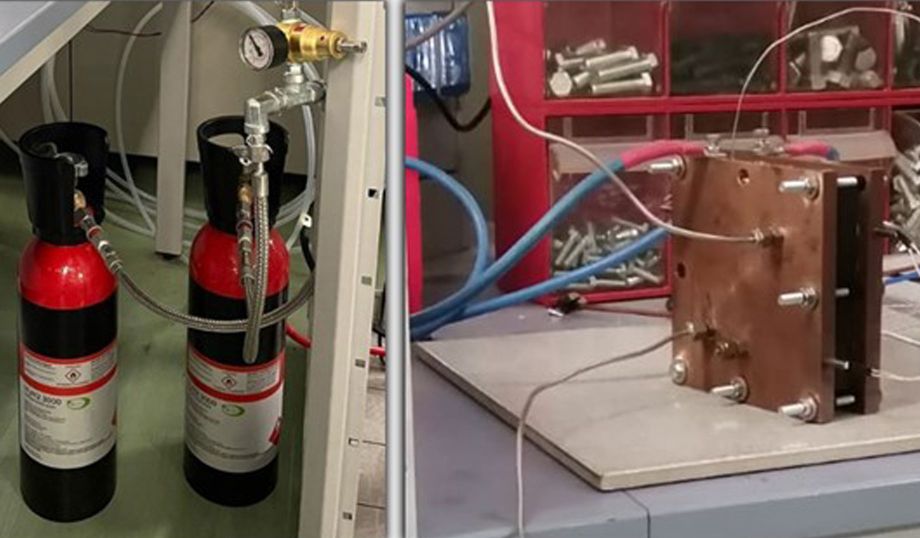
Figure 1
All components are connected and controlled in real time using a hardware-in-the-loop (HiL) approach. A dedicated software simulates real physical components under actual operating conditions, manages energy exchanges, and optimizes energy flows. This information is transmitted to the hardware components, which, in turn, send back data on their operational status, closing the loop and ensuring accurate real-time simulation and system optimization.
Finally, a smart meter connects the system to the FlexBIT platform, enabling online communication and real-time monitoring of the energy produced and consumed within the energy community.
Smart Energy Parking
A Living Lab for V2G and Demand Response Innovation
The smart energy parking is a demonstrator built in 2023 at the Campus of the University of Palermo with the aim of testing the participation of this type of end-users in various Demand Response actions or in the REC framework, both through the use of V2G technology and through the control of a 46 kWh lithium stationary battery storage system. The system is equipped with a 40 kW photovoltaic system and a parking light control system and communicates with a central controller located in the Smart and Microgrid laboratory of the Department of Engineering.
The demonstrator can be used for testing both frequency regulation services via the V2G charging point and load shifting actions.
Solar Cooling System
Energy-Efficient Air Conditioning for Sustainable Load Shifting
The demonstrator is an innovative air-conditioning system (Freescoo 3.0 VMC) operating with low temperature heat (solar energy, heat pump, district heating, or waste heat) designed for controlled mechanical ventilation applications in the residential and tertiary sectors. The system is based on an original adsorption air treatment cycle capable of ensuring the control of air temperature and humidity, and guaranteeing adequate air exchange in the building. The main advantages are: operation based on the use of low-enthalpy heat (T>60 °C). For this reason, Freescoo can be integrated with any type of heating distribution system; low electricity consumption due to the movement of circulating air and water.
The system will be used to test the possibility of its use in load shifting actions by exploiting thermal inertia.
Mentioned elements will be integrated into the common laboratory microgrid, where different scenarios of the AC supply network condition as well as PV and BES contribution can be examined.
Laboratory tests will provide boundary characteristics of the regulatory potential of the microgrid components and their response to variable conditions in the microgrid. Together with other project partners from Italy and Malta, the results obtained in the WUST test laboratory will contribute to the creation of digital twins of microgrid elements.
Laboratory test bench
for exploring regulatory potential of microgrids elements
At the Wrocław University of Science and Technology, a demonstration laboratory stand will be created to test the regulatory potential of microgrid elements such as photovoltaic inverters, battery energy storage inverters/chargers, and programmable loads. Full identification of the regulatory capabilities of these devices will help identify the scope of microgrid flexibility.
The system includes a 15kW/1500V regenerative DC power supply operating as a hardware photovoltaic array simulator or a battery simulator. The next part of the stand is a laboratory set of a 2.4kWh/48V Li-ion battery energy storage and a laboratory set of controllable active and passive loads.
As part of the FlexBIT project funding from the CET Partnership program, the stand will be equipped with an AC Regenerative Grid Simulator 15kVA/0.4kV. As a result, it will be possible to intentionally hardware-enforce the operating conditions of the microgrid.
Electrum Energy Storage System (ESS)
Smart Energy Storage Demonstrator: AI-Driven Energy Optimization
Electrum’s Energy Storage System (ESS) Demonstrator is designed to revolutionize energy management with cutting-edge Machine Learning Operations (MLOps). This autonomous system optimizes energy efficiency and economic performance, leveraging real-time data and advanced AI to provide powerful insights for energy producers, operators, and consumers alike.
Intelligent Energy Management for a Sustainable Future
At the heart of the demonstrator is an innovative ESS Estimator Digital Twin, which acts as a business and technical analytics tool. By analyzing energy consumption, production forecasts, and market price fluctuations, it delivers AI-driven recommendations to optimize Energy Storage System configurations for any given installation—whether planned or existing. This ensures that energy solutions are not only efficient but also cost-effective, helping businesses achieve the perfect balance between energy generation and consumption.
Built for Real-Time Performance with Advanced Technologies
The demonstrator operates on a robust distributed ITC infrastructure, powered by Kubernetes and backed by high-performance computing (HPC) servers. With edge computing and IoT sensors, including weather stations and energy metering devices, it processes local data and synchronizes seamlessly with MLOps frameworks, enabling real-time energy management and optimization. The integration of a SCADA system ensures continuous monitoring and control, while an AI recommender system continuously analyzes performance to improve energy efficiency.

A Comprehensive Energy Ecosystem
The demonstrator connects various stakeholders, including energy producers, ESS operators, energy consumers, and even external devices like EV chargers, enhancing local energy management and supporting grid stability. By utilizing a fully sharded data model and AI-powered digital twin technology, the system ensures real-time processing of energy data, providing businesses with the insights they need to optimize energy use and reduce costs.
Empowering the Future of Energy with Smart Technology
With technologies like Nvidia Compute & Storage Fabric, CUDA libraries, and deep learning-based weather forecasts, the ESS Estimator delivers highly accurate predictions for energy production and consumption. This enables businesses to make data-driven decisions on ESS sizing, capital expenditures, and technical specifications—allowing them to maximize the potential of their energy systems.

Lab-Based Microgrid Digital Twin Demonstrator
Advancing Real-Time Monitoring and Optimization of Microgrid Systems
The Lab-Based Microgrid Digital Twin Demonstrator is an advanced research tool designed to integrate real-time data streams with a digital twin model of microgrid systems. This demonstrator incorporates renewable energy sources (solar PV, wind), battery storage, and dynamic load profiles, providing a comprehensive, real-time simulation and optimization platform.
By utilizing Hardware-in-the-Loop (HIL) testing, the system facilitates seamless interaction between physical and virtual components, ensuring a high level of accuracy in real-time performance analysis. The integration of advanced data processing algorithms enables continuous monitoring, predictive analysis, and the optimization of energy flow within the microgrid.
Key Features:
-
Real-Time Data Integration: Continuous data exchange for precise monitoring of energy production, storage, and consumption.
-
Advanced Control Algorithms: Implementing sophisticated computational techniques for system optimization and predictive modeling.
-
Hardware-in-the-Loop Testing: Facilitates accurate validation of virtual models through direct interaction with physical components.
-
Dynamic Load Profiling: Real-time adaptation to varying energy demands and conditions.
-
Robust Communication Framework: Ensuring reliable, secure data exchange and control across all system components.
This demonstrator serves as a versatile platform for the development, testing, and optimization of microgrid solutions, supporting research into efficient, sustainable, and resilient energy systems.





